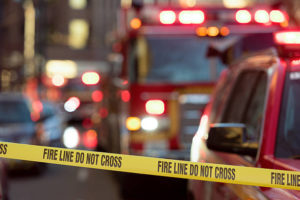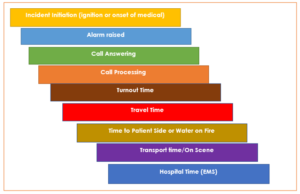The CPSM Approach

The CPSM team believes in combining experience, data, research, and personal interaction to assist our client team with developing the most effective, efficient, and safe deployment methodology.
Following a project commitment, the CPSM team will conduct a project launch with our client team members via Zoom. The purpose of this launch is to clarify expectations, identify key players, and begin the process of data collection and quantification.
Data…. why data?
CPSM has found that there are tremendous amounts of data collected on a daily, even hourly basis on many departments. The challenge is how to access that data; how to clean that data; how to quantify that data; and how to present the product so that everyone understands.
CPSM does not use hypotheticals. We don’t use “national averages” upon which to base our client team’s individual recommendations and findings. We begin analyzing your data to establish your performance and paint a complete picture of how you are deploying with the accompanying results.
 It is critical to have data and one of the biggest challenges for departments because rarely do they have the depth of our analytical team and its decades of research and trademarked processes. If we are going to recommend change and if our client team is going to make change – they need data to measure how it impacted their outcomes. It’s not good enough to say, “this is what happens wherever.” We need to provide you with the tools and launch point so that you can measure and report to your stakeholders – citizens, elected officials, appointed officials, and staff – how those changes affected the outcome.
It is critical to have data and one of the biggest challenges for departments because rarely do they have the depth of our analytical team and its decades of research and trademarked processes. If we are going to recommend change and if our client team is going to make change – they need data to measure how it impacted their outcomes. It’s not good enough to say, “this is what happens wherever.” We need to provide you with the tools and launch point so that you can measure and report to your stakeholders – citizens, elected officials, appointed officials, and staff – how those changes affected the outcome.
No city, county or community ever imagines just skipping the annual audit. It’s usually a mandate in the charter or state law. Yet we find few communities are willing to extend the same effort to delve into the operations of their largest emergency response departments whose actions can literally be life and death. Our process is the same for each community so that we can build national data reporting tables and compare you to like demographics, but we create our recommendations and findings based on your individual performance. The CAD system is also the official record of public safety services for communities. Like minute books for the city clerk, it is the record of times and actions taken by your response community. The information at dispatch needs to be collected; it needs to be correct; and it should be a resource to assist with decision making daily.
CPSM ensures this information and system is working and correct before we proceed to other facets of our work.
Begins at dispatch
Armed with the data and information we gather; we start your project at the dispatch center. Benchmarks have been established for dispatch centers across the country in National Fire Protection Association Standards (NFPA 1220, NFPA 1221, NFPA 1710, NFPA 1720, etc.). Many of those same benchmarks and standards have also been adopted by the Association of Public-Safety Communications Officials-International (APCO).
Time is critical when it comes to fire and EMS emergencies. Research has continued to show that most of the fire and EMS responses do not require lights and sirens. However, the information gathering component is the same whether it is a “Code” Emergency run or a non-emergency response. The alert must be answered, the information processed, and then the correct response mode determined using data gathering that has begun in the dispatch center.
Operations Review
Our operations team will be receiving the data report as will our client team. We want to ensure we have the information correct; the unit designation and other specifics in language understood and used by our client team; and that everyone is agreed on the interpretations of CAD factual performance.
Our operations SME’s will be reviewing the information your upload while the data team performs its work. We will review your contracts, your agreements for mutual and automatic aid, your building codes, your enforcement reports, your standard of cover, risk assessment, and other documented policies.
Policy, procedure, Standard Operating Policies, and Standard Operating Guidelines direct the staffing and deployment of fire and EMS departments. However, many departments find it difficult to keep up with changes and demands while balancing calls for service and other tasks assigned to the department. Is your department keeping up with key personnel issues and are you conducting the necessary mandatory training required for emergency responders in fire and EMS?
The CPSM team will evaluate equipment, maintenance, records, policies, procedures, mapping, implemented technology and innovations, facilities, training, and staff to create recommendations for future service delivery.
Risk Assessment
Many agencies express a desire to benchmark and meet NFPA standards like 1710 and 1720. However, what they fail to conduct are all-hazard, all risk analysis. Both standards base deployment of resources on a linear approach to deployment of emergency resources.
A department needs to conduct an all-hazard, all risk assessment to locate stations, assemble the proper and necessary number of responders, and equip those responders with the proper tools to manage each hazard and risk.
The Operations team will look at the Community Risk Reduction (CRR) program that should be identifying and seeking solutions for all the emergencies for which a department has a high probability for a response. While the possibilities for emergency response by a department may be limitless, engaging in true Community Risk Reduction activities can “narrow” those possibilities to a more manageable list of probabilities.
Best Practices
The operations team will conduct an analysis of the Fire and EMS operational functions and guidelines of the department, the Fire and EMS operational service delivery model, review of contracted services in the unincorporate areas, and all internal and external factors influencing service delivery.
The internal information gathering process (work conducted during CPSM review of information provided through the document request, meetings, and the on-site visit) will include:
- Examination and analysis of the factors that enhance/impact the department’s current service delivery model
- Examination and analysis of operational guidelines and their connection to the current service delivery model
- Discussion of the organization’s strengths, weaknesses, opportunities, and threats as it relates to deployment of resources and response times
- Analysis of Fire Management Zones
- Analysis all-hazards that will lead to the completion of a Community Risk Assessment
- Analysis of Standard of Cover Concepts
- Exploration and analysis of various mission driven specialty fire protection and other response duties such as EMS ground transport, emergency management operations, and technical rescue
